Jerry Ordway celebrates Stan Lee with the return of the Earth-6 Justice League
The comic book legend talks about working on DC's original Just Imagine and the new Tales of Earth-6
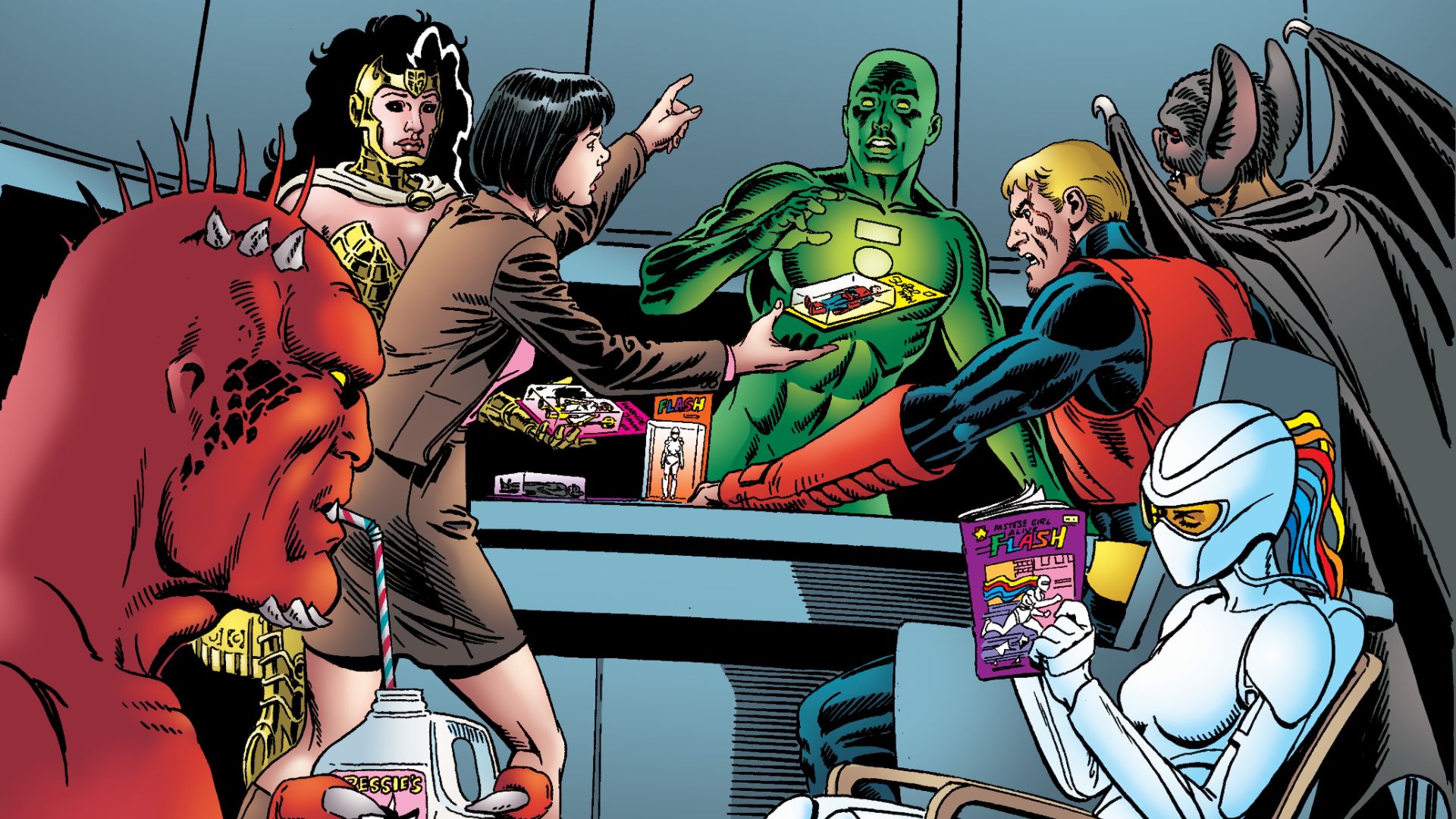
Due to the events of Dark Crisis on Infinite Earths, the DCU is being remade. It's not the first time this has happened, and though there are going to be some notable change-ups, it's certainly not the most drastic time either. With a long history of Elseworlds titles, the DCU has gone through some pretty wild makeovers, but few were more daring than the time Stan Lee took the reins as DC-multiverse maker, in the 2000 miniseries event Just Imagine.
Released over the course of twelve issues, Stan Lee's Just Imagine reworked characters like Superman, Wonder Woman, The Flash, and Shazam, transforming them into all-new, all-different personas. Now, as the comics community prepares to celebrate Lee on what would have been his hundredth birthday, DC is revisiting his corner of the DCU with Tales of Earth-6: A Celebration of Stan Lee.
Heading to Earth-6 (the official designation of the Just Imagine universe) are some of DC's top talent, including a few of the folks that were there for the original series. One of those people is legendary artist and writer Jerry Ordway, and before the comic hits shops on December 27, Newsarama was able to chat with him about his experience. Read on to hear what it was like working with Lee to create Just Imagine, and what it was like honoring him with its return.
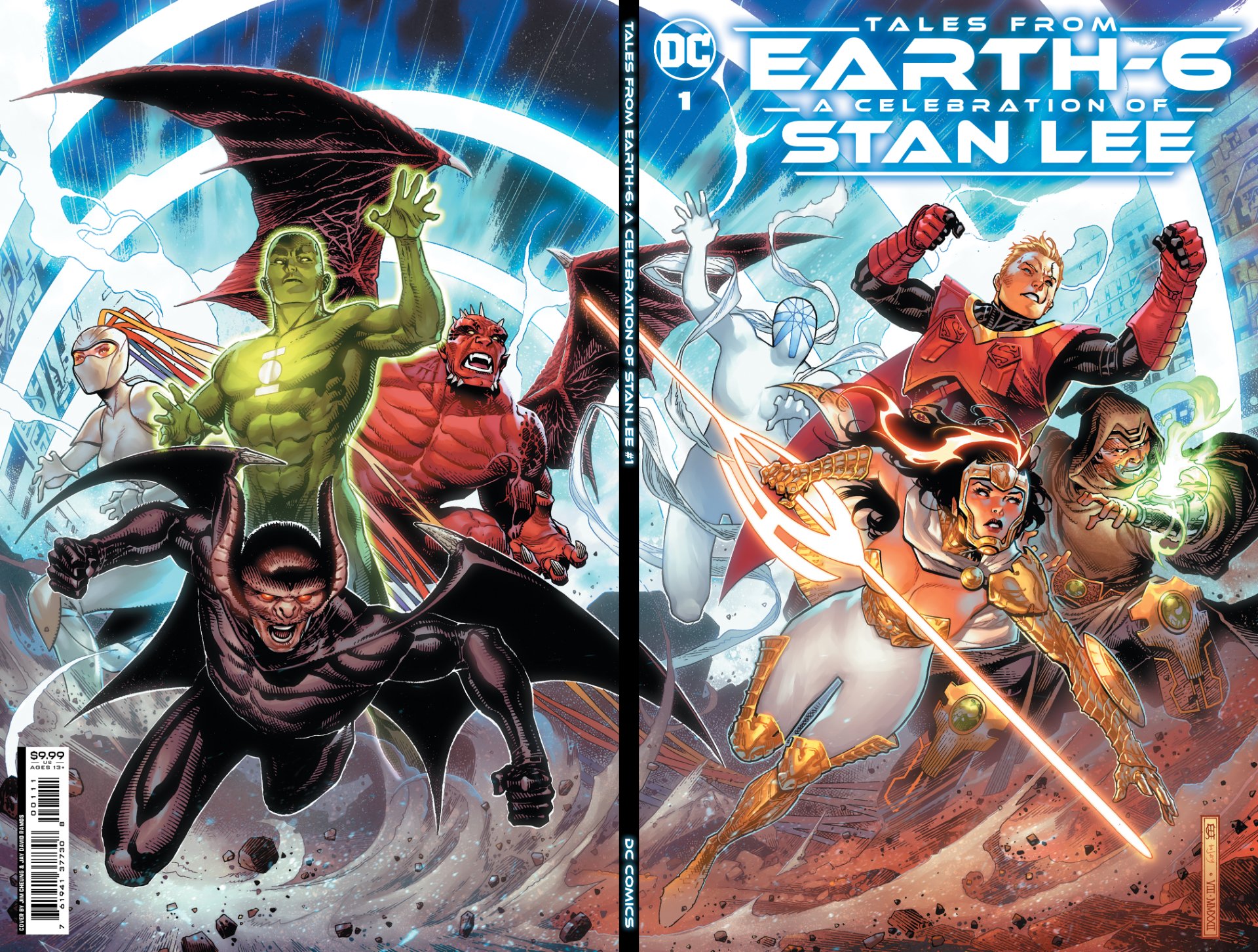
Samantha Puc for Newsarama: Jerry, there have been a ton of DC anniversaries and milestones this year. Death of Superman, you know, the Just Imagine for what would have been Stan Lee's 100th birthday. What's it been like to revisit these past eras of your life and career?
Jerry Ordway: Well, I mean, it's gratifying that anybody remembers, you know, some of the stuff that we did. It's been fun. It doesn't feel like 30 years or whatever. I mean, when you start in on something, the time kind of rolls away and you feel like you're back whenever you first were doing it. So, I guess that's just an, you know, an aspect of being old. [laughs] You know, you get that sense of how time really is different depending on which direction you're looking at it from.
Nrama: For sure. And how involved were you in the original Just Imagine, versus this one shot that you did for the new anthology?
Ordway: In the original one, Mike Carlin was the editor. And Mike asked me to do it because I'd also worked with Stan a little bit, one previous time on a Fantastic Four anniversary issue, the 25th anniversary. I'd met him several times at comic book shows, and he was always very enthusiastic. So we got together on a telephone conference call; I think it was me, Mike Carlin, Michael Uslan, and Stan. And we hashed out the rough bones of the story.
Comic deals, prizes and latest news
Get the best comic news, insights, opinions, analysis and more!
Stan really was resistant to physical plotting. At the end of a couple of hours - I think we were on the phone for maybe 2 hours - and he just said, 'I think Jerry's got enough to go ahead and start, don't you? You don't need me to write out a plot.' And I was like, 'Uh, I haven't been taking notes.' But Mike Carlin had been taking notes. And Mike just quickly jumped in and said, 'Oh, no, no, I have notes. I'll just type up the broad strokes.' So, I mean, I was very involved.
Stan liked the idea of putting in dialog after the fact. So I felt like, you know, Jack Kirby or Steve Ditko in that situation; you're telling the story in pictures and then just giving them some guideline for what is happening on the page, even though it's usually pretty obvious. But [Stan] was very fun. He was always a very enthusiastic guy. No matter his age, he always came across as a 40-year-old or whatever. He had that kind of, 'let's go put on a show' attitude, so that was definitely fun. Michael Uslan was also a contributor to the plotting.
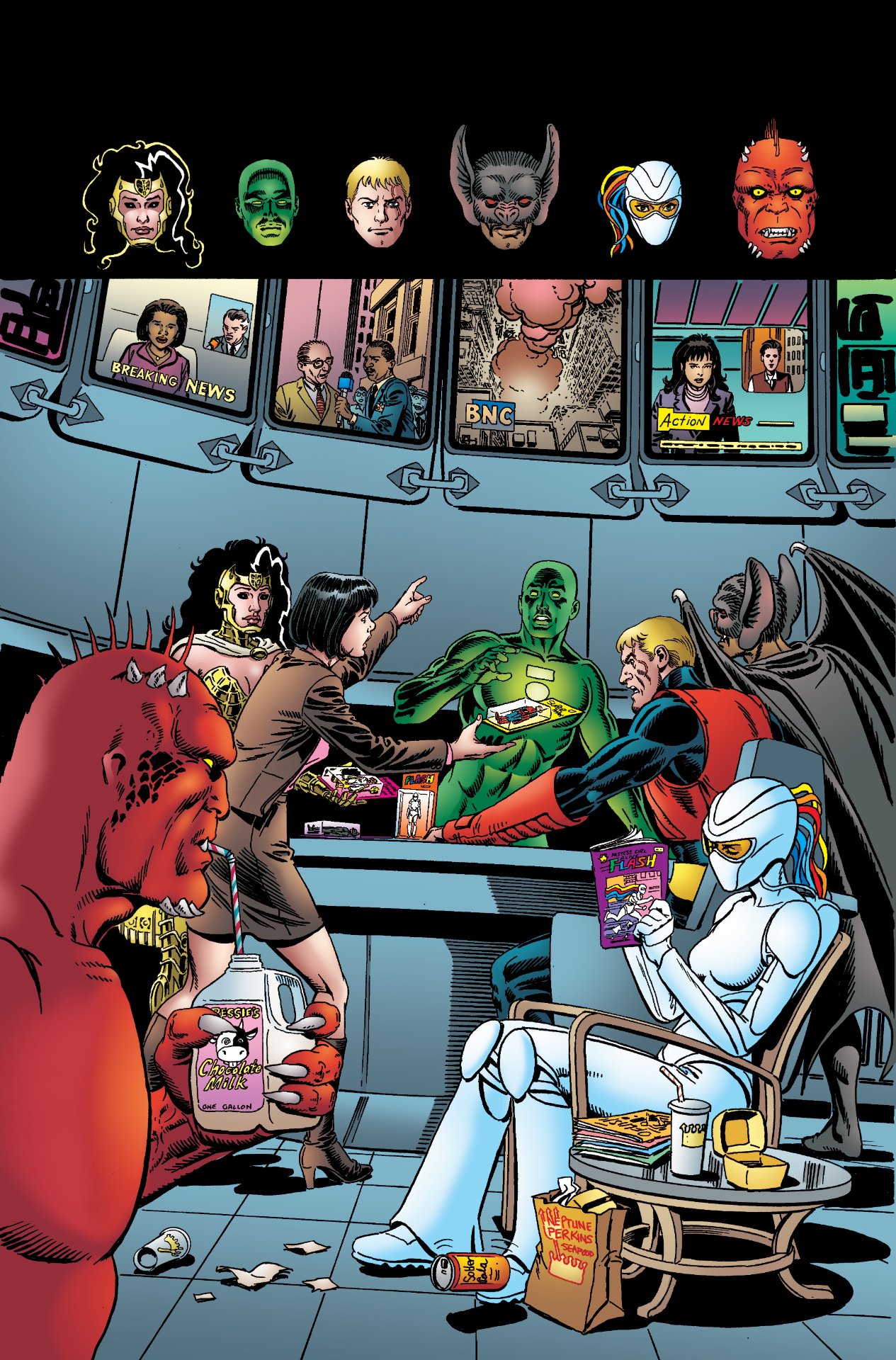
I'm not sure how the other teams did it, but when we did the JLA, we already had the basic characters introduced in their individual issues. So the only real difference for the story that I did is that Shazam and Sandman and some of the characters that happened after my issue were introduced. I incorporated them in my story, even though eight pages is not a lot of space. You have to figure out what is going to fit in that space. You know, you can't really bite off too much story content when you're doing a short subject, but you can still do a satisfying snippet, I guess.
Nrama: I feel like doing the art and then having the script come after is sort of backward, from what I understand, of the way that most artists work in comics. So did you feel like that was especially challenging at the time?
Ordway: Oh, no. I mean, from the time I started in 1980, the DC project that I did was done plot first, and then the dialog was customized to the pacing and the art. I always appreciated that I felt less restricted. You know, you have to leave that space in a panel for balloons to go in, so there's a little bit of risk as far as hoping that the writer wouldn't cover up some background detail that was important that you put in there. But I like working that way.
Generally, if you're drawing from a full script, you really have more things to think about that are not artistic as much about storytelling things; they're logistical. So, if the writer has ten dialog balloons on a certain panel, you have to figure out the order that they're going to be read in and how the letterer can put them in. You have to put a character right or left, depending on who speaks first or who has the most dialog. It's more of a design challenge.
Working with the plot is much more creative because you basically get to tell the story in your own way. Then the writer is holding on and basically trying to customize whatever to the art. I've written when I was on Superman; I would write plot-style for Tom Grummett. Same thing with Shazam - when I was working on the monthly comic, Pete Krause was always really good. Whatever they brought was maybe 10% different than what I envisioned.
The fun part of it is that you see somebody throw you for a loop by throwing something a little different in, and then it would make you readjust how you thought a sequence would go. Like, somebody draws somebody really angry when it maybe wasn't specified. Then you go, 'Okay, I guess this is going to be more confrontational than I had originally envisioned.' That's the fun part, and that's the collaborative part.
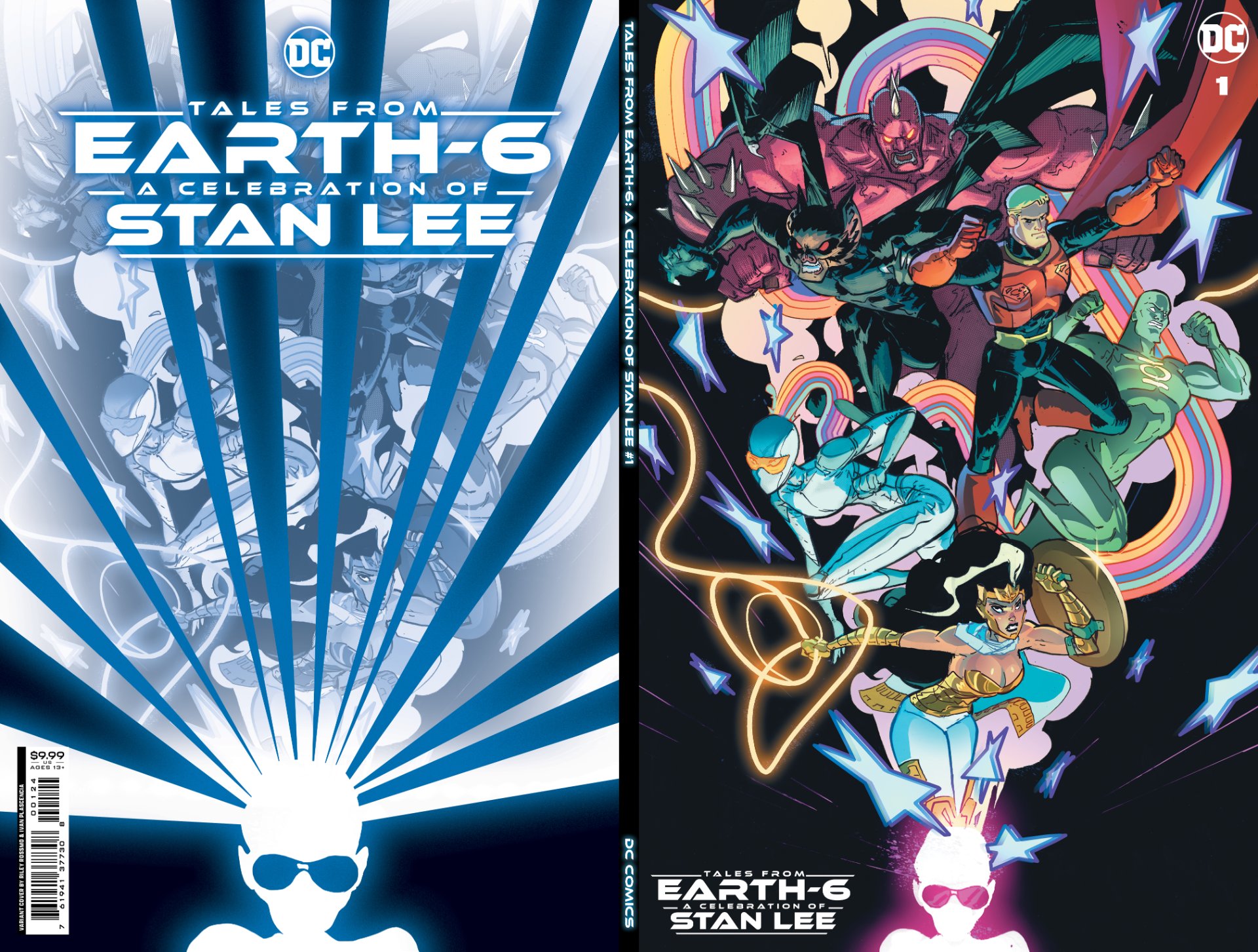
Nrama: For this new story, you both wrote and drew this one, right? Did you also approach this from a plot-first perspective? What's the difference when you're doing both components?
Ordway: Well, when you do both, I tend to challenge myself. And then when I'm drawing it, I kind of kick myself. It's like, 'Why did I do this?' But it's pretty much the same thing. I think the idea of doing it in that way gives you that time to step back and look at and change stuff. Because when you're typing a plot, you type a plot on a deadline, then turn the plot in.
I mean, when [editor Andrew Marino] asked me if I wanted to do it, I said sure. And then, within an hour of getting this email, I said, 'Okay, I have an idea.' I typed out a three-sentence paragraph and I sent it to them saying, 'Here's what I would do.' And he said, great. So I went from a really, really rough synopsis to just breaking it down page by page so I knew that I'd be able to fit everything in it.
But the work process is pretty much the same as when I'm drawing it. I know based on the plot how much dialog I want to put in. The only downside of being the writer and the artist is when I start putting the dialog in, I think, 'Oh geez, can I fit as much as I need to fit in there?' Because I drew some nice backgrounds I don't want to cover up.'
So that's the only challenge, just thinking about it in those terms. I'm still close enough to the work that I feel like I don't want to cover up this one bit that I spent an hour drawing or something. Whereas the dialog writer, if they didn't draw it, they're going to go, 'Okay, well I need space.' And that's the only space to put this balloon. So that's where it goes.
Nrama: And then, obviously, this version of the Justice League is very different from the Justice League that we know from DC Comics and the main DC universe. Did you find it difficult to write this version of the characters? How did you approach that?
Ordway: Well, I reread the entire series, the original series. And what I tried to do was think of what Stan Lee's vibe was, which was the Marvel comics that I grew up with. It's kind of people arguing. I mean, that was the appeal as a kid when I was reading The Avengers, for example, was that there was this dysfunctional family approach. The characters would fight, they would argue. So that felt like there's a natural aspect to them. If they have a meeting room or they have a mansion or headquarters, there's going to be some character bits mixed with conflict.
I only had like two pages to do action really, so the beginning part of it is mostly set up and it's all the character bits. It's pretty freeing knowing that there's only that finite number of stories that you have to read, you know, to figure out what characters are going to do or say. Each of those books had a very distinctive voice, which was mostly Stan Lee's voice, so it was very simple.
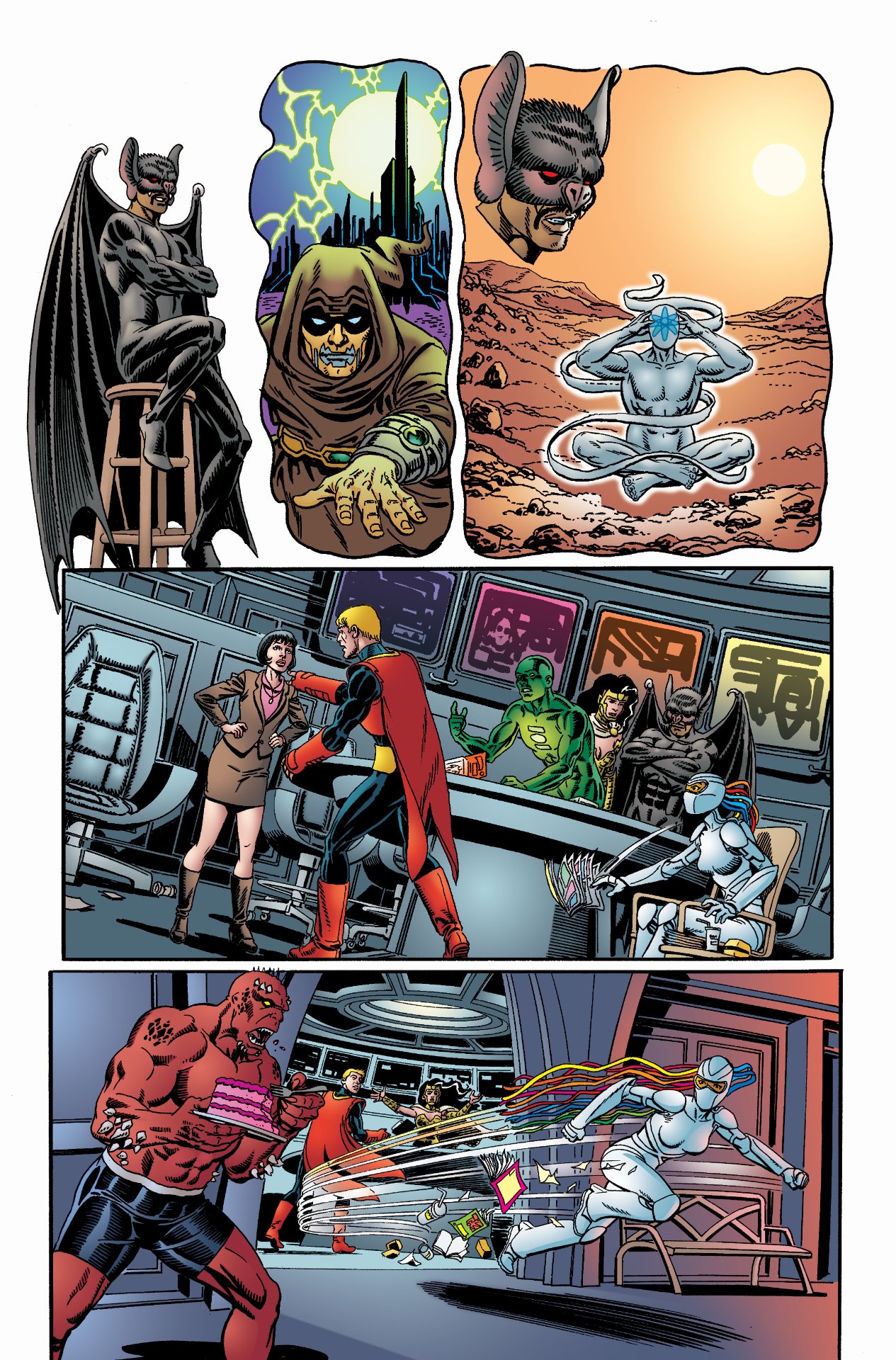
It was a lot of fun because, again, just the idea of being able to try to capture a little bit of that vibe that he had, the repartee and the arguing and throwing a little surprise in there or something. It was fun. They're all like puzzle boxes, you know? I mean, when you get an assignment like that, you just try to figure out the best way to unlock something.
Nrama: Is this a world that you would want to do more in? Obviously, you only have eight pages here, but is this something you would want to continue?
Ordway: I mean, when you dove into anything, you find things that would be great to do and you don't have space for it. You always wind up coming up with more ideas than you have room to show. So, yeah, I mean, it would be very easy to slip into that, because that world exists.
In a sense, it's like a little time capsule of the year 2000. It was kind of a transitional period in comics from the weathered, grim and gritty vigilante era or whatever. I think that there was a little bit of maybe a throwback kind of optimism in it. But, you know, it's definitely retro for any fan reading it now. It would be old-style comics, you know?
I asked the editor, 'When does this take place? Is this taking place within that same world of those first twelve specials? Can someone have a cell phone?' These are givens now because we've lived with cell phones and we've lived with wireless communication for so long. But it's like, well, does that violate anything? And no, it really doesn't, as long as it's not a key point. But those are like the types of things that you'd want to just address, I guess, if you're trying to come up with an idea. You don't want to violate whatever rule that editorial may have put in place. But, you know, it's fun. It's always fun to do something different like that.
Nrama: Let's talk about Lois. She's obviously not part of the team, but she's marketing their brand, which is something that comes up in more modern superhero comics because they're public figures. So as far as Lois's involvement and the concept of the brand in this 2022 version of the Justice League, how did you come up with that idea? What was your inspiration behind that?
Ordway: Well, in the '60s, there were things that Stan had done, little touches like having, the characters be in comic books and like, how does that work? Is that something that's licensed? Stan was ahead of his time in that thinking because, I mean, with Fantastic Four there were a lot of marketing possibilities. So I think that's what he was playing with.
The Lois and the Superman character was the idea that you've got to pay the rent somehow. If you got a rich guy, you know, Bruce Wayne in the DC universe, maybe he can afford to pay for the Hall of Justice or something. But it felt a little more immediate to have their bills being paid by endorsement deals.
And, you know, we live in that era. I mean, that right there is not new either. There were Batman movies, cereal, and peanut butter. Things like that have existed since the '60s, really. I mean, even in the '50s, Superman was on Wonder Bread. So endorsement deals seem like a kind of a good way other than charging someone to solve a crime. It's more a benevolent way, I guess, selling your brand or whatever.
But yeah, that seemed like an obvious extension of her even in the way she was portrayed in the original stuff as being like, 'I'm going to be your manager.' What does a superhero need? Ultimately, is that their job? Do they need a place to sleep and food to eat and then that allows them to go fight crime? These are all interesting concepts anyways.
Nrama: Sure. So what was your favorite part about putting this story together?
Ordway: It was really just revisiting. I was just surprised that they would revisit it because it was this specific one-time deal that existed back at that time. I think Mike Carlin and Michael Uslan might've brokered the deal to get Stan Lee to do these issues, but this was meant as a stopgap, I think, in Stan's standing with the other company because they had gone through bankruptcy.
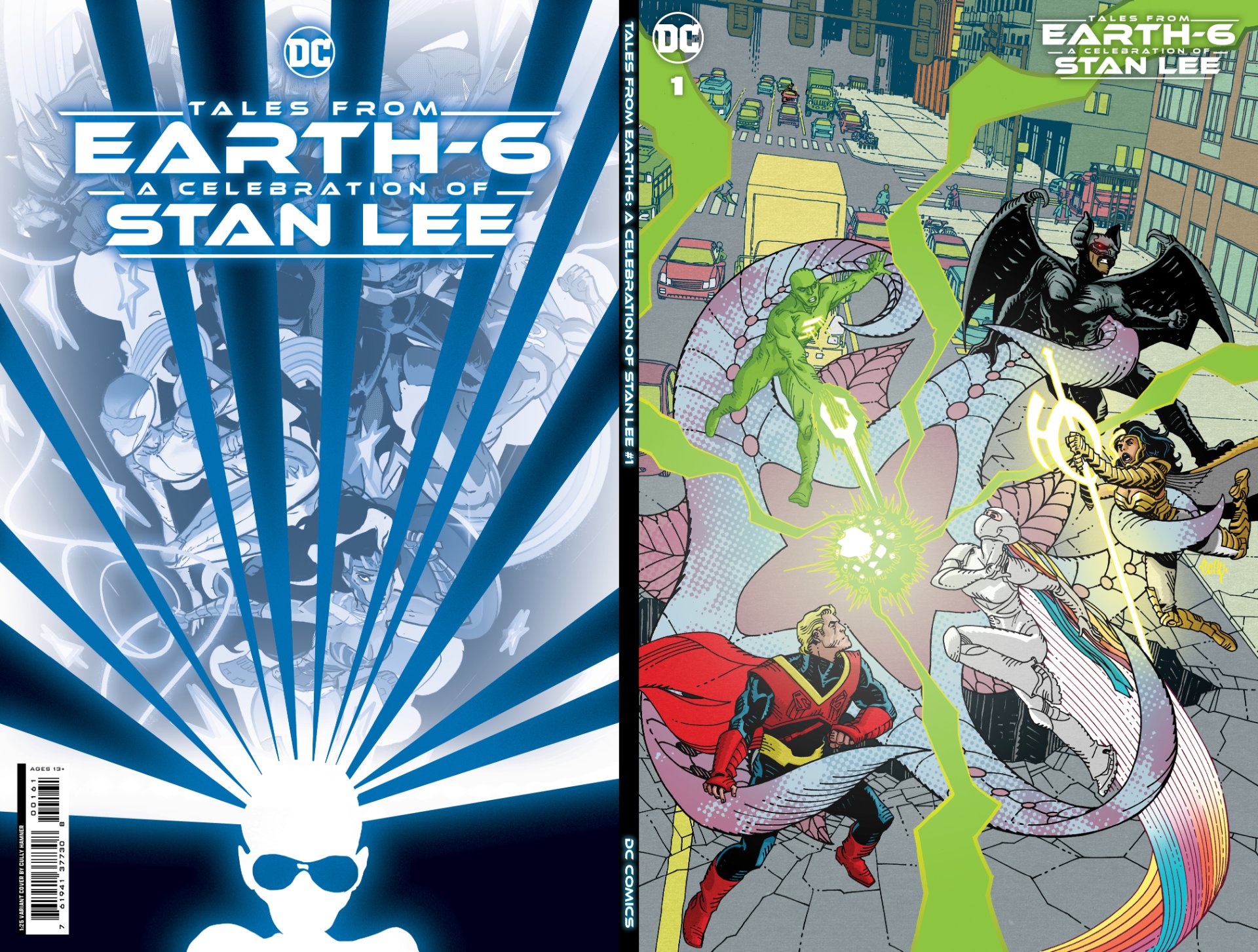
So, you know, in a sense, it was, you know, 'We're willing to offer this. We'll get you through this year.' Because he's still dependent on income from Marvel during that time. This was a big gap, so it was a great solution. To me, it didn't feel mercenary or anything. It was just like, oh, this is a great opportunity to have Stan Lee re-envision these characters. That was the appeal.
It was fun because I never really thought they would revisit them. But they did, [Stan] did lay out a universe within those twelve issues that you could easily pull threads from and do storylines from. Whether there is a market for it or an interest, I guess we'll find out.
Nrama: Nice. And what are you hoping that readers take away from this?
Ordway: I think the biggest thing is just that it's a nice way to remember Stan's 100th birthday. I mean, he was such a force in comics. I think you can kind of lose track of the fact that, yeah, he was a creative force from the '60s through the '70s within comics, but from then on he became an ambassador for selling these things in Hollywood, and he was always an ambassador for comic books by virtue of being there. It was like comic books were kind of in his blood.
From reading interviews, he always had this thought that they would be big as media things, like movies, and what have you. And we're living in that era now. I mean, somebody has to believe that's possible, you know? I think that's where his impact is felt, that in the '60s, he felt like there could be a Spider-Man movie. And by targeting college-age kids with the comics back then, he also felt like he wasn't just appealing to ten-year-olds.
That's the legacy, it's that the industry, for better or worse, has grown into something that has a fairly wide age range of readership. So it is a celebration of him.
Nrama: Yeah, for sure. That exhausts my list of questions. Is there anything that I didn't talk about or anything that you would like to add?
Ordway: Since Mike Carlin is not an editor at DC anymore, he's been doing the movie stuff, the cartoon stuff, I feel like he was a really big part of that original thing, just as he was a big part of the Death of Superman. And I think it's easy to kind of forget the impact that an editor has on things because an editor just doesn't, you know, sign vouchers and all that stuff. I mean, there's a lot of creative work that happens too. So I'd just like to add that, I think.
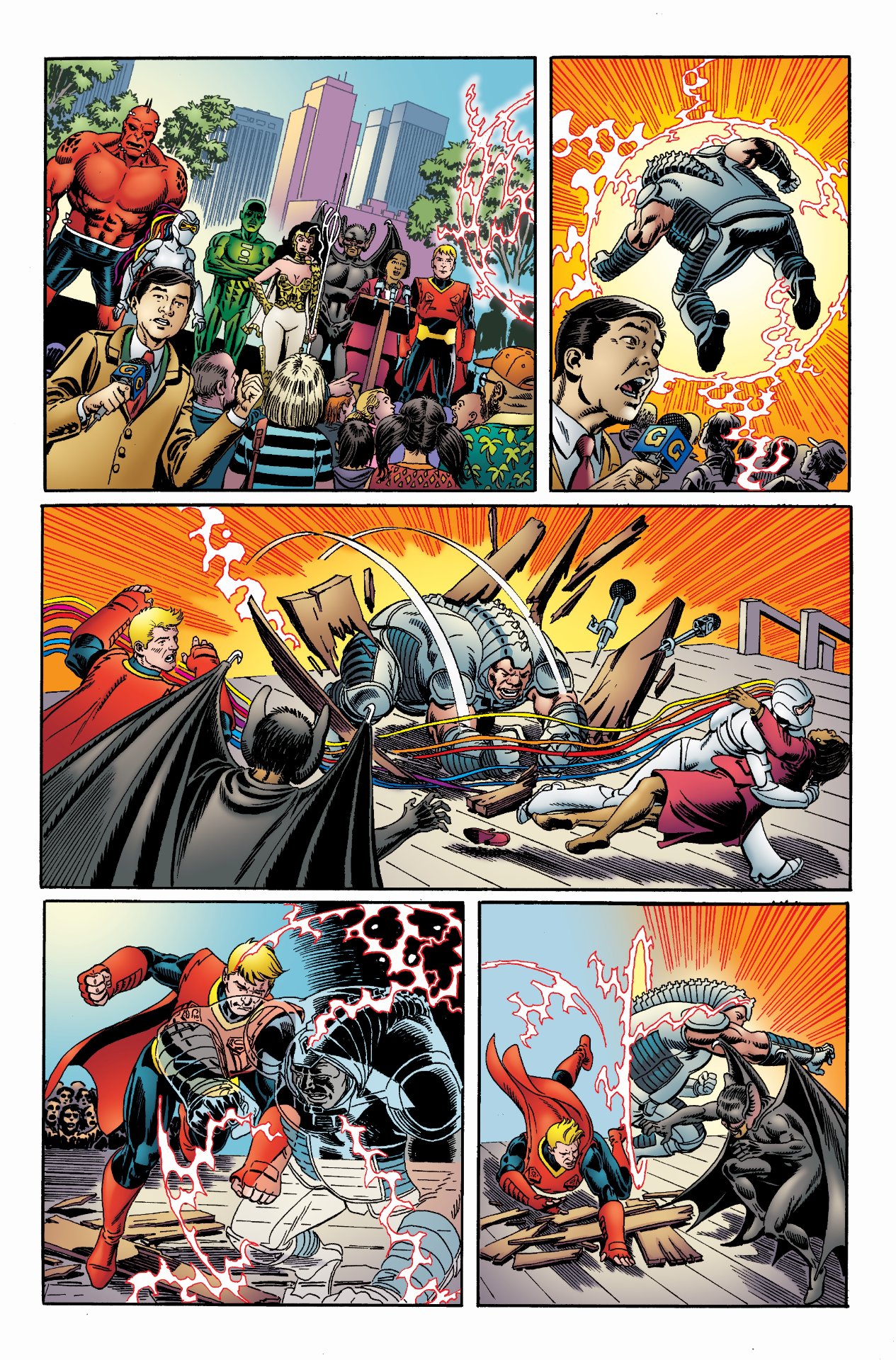
Between Mike and Michael Uslan, they both contributed a tremendous amount to the Stan Lee thing originally and it shouldn't kind of be forgotten. When somebody reprints something, it just says, 'Original editor.' And I think you lose the context of what that position actually entails, you know, hand-holding and a little bit of scolding and a little bit of creativity at the right time and the ability to say no to somebody. Those are all really important things that shape ideas that, you know, a writer or creative team might have.
Nrama: Yeah. All right. Well, thank you for taking the time to chat with me. I really appreciate it. I thought the story was really fun. It's been a while since I took a look at any of the Just Imagine stuff from the early aughts, so it was fun to revisit that. So thank you.
Ordway: I really appreciate you very much.
Speaking of DC events, check out Newsarama's list of the most impactful DC events of all time.
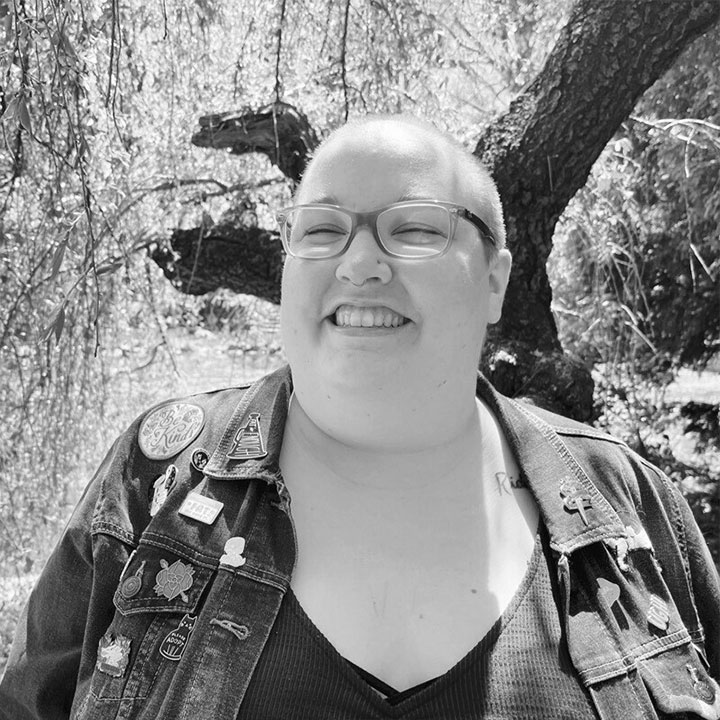
Samantha Puc (she/they) is an editor at Newsarama and an avid comics fan. Their writing has been featured on Refinery29, Bitch Media, them., The Beat, The Mary Sue, and elsewhere. She is currently pursuing a Master of Fine Arts degree in creative nonfiction at The New School.
- Grant DeArmittFreelance writer


